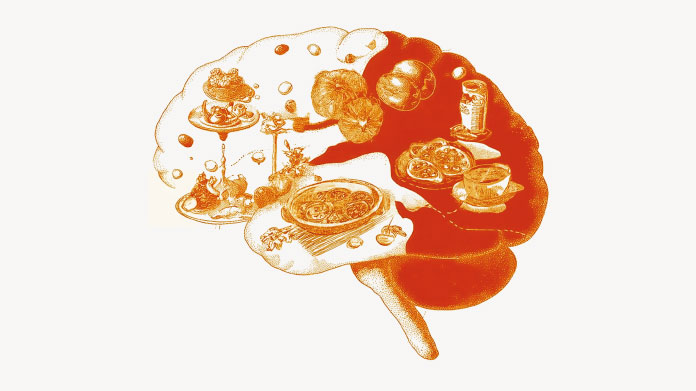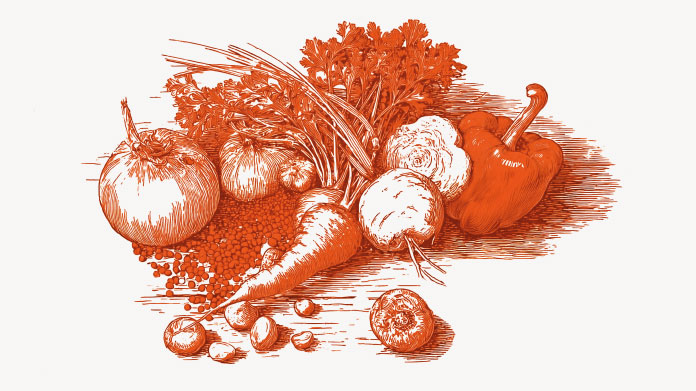Slimming: 4 Potential Fat-Burning Supplements
Appearance and health can be affected when excess fat accumulates. Discover 4 potential fat-burning supplements to help.

Mechanisms Involved in the Accumulation of Fat
Adipose tissue is undoubtedly one of the reasons why, for millions of years, humans have managed to survive health challenges, climate warming and cooling, etc. (1).
A healthy man, weighing around 75 kilos, is thought to have an energy reserve of about 100,000 kcals in his adipose tissue, a significant amount.
However, adipocytes — cells able to accumulate excess fatty acids in the form of triglycerides — seem to have an almost infinite capacity for storage. Contrary to long-held belief, recent studies suggest that the body may be capable of making new ones (2).
Consequently, any excess consumption of alcohol, simple sugars, or fats can lead to fat accumulating in adipocytes. In fact, all surplus calories are converted into triglycerides stored in adipocytes: if your calorie intake exceeds your energy expenditure, fat accumulates.
It is the challenge of the 20th and 21st centuries: a sedentary lifestyle with little physical activity, coupled with a diet high in calories, alcohol, fat, and simple sugars, may have resulted in a global rise of excess weight and obesity: according to research, incidence of obesity has almost trebled since 1975, and in 2016, 39% of the world’s population was overweight, of which 13% were obese (3).
Garcinia Cambogia to Prevent Accumulation of Fat
Also known as Malabar tamarind, the Garcinia cambogia tree is part of the mangosteen family, the bark and fruits of which appear to have been used for thousands of years, especially for flavoring Asian cooking, but also in traditional pharmacopoeia.
Recent in vitro studies may have demonstrated the effect of Garcinia cambogia’s active principle on the body. Hydroxycitric acid appears to inhibit ATP-citrate lyase which converts sugars into fat. Other studies may have shown hydroxycitric acid to have a hunger-reducing effect, which could manifest by taking certain supplements (such as Garcinia Cambogia standardized to 60% hydroxycitric acid) (4).
Garcinia cambogia thus seems recognized today as an aid to weight control and reducing fat storage, as well as for helping to maintain normal blood sugar levels.
Coleus Forskohlii for Breaking Down Fats
A perennial plant from the lamiaceae family, Coleus forskohlii, or Indian Coleus, appears to have been used for thousands of years in Ayurvedic medicine.
This plant’s most powerful active principle is actually a diterpene called forskolin, which acts on adenylate cyclase. This is an enzyme involved in lipolysis, the breaking down of fats in adipocytes (5).
Coleus forskohlii is thus an essential tool for helping to combat the accumulation of fat: it may offer recognized support for weight control and the metabolism of lipids. You can find it, along with other active principles and natural plants, in targeted supplements (such as Advanced Fat Burner).
Liquorice to Reduce Visceral Fat
Consumed for thousands of years across the world, from Africa and Asia to the Mediterranean, liquorice seems popular among those with a sweet tooth, but less well-known for its potential health benefits.
Containing glycyrrhizic acid and possibly highly-antioxidant bioactive flavonoids such as glabidrin, liquiritoside, and isoliquiritoside, liquorice could support gastro-intestinal and immune health, help maintain healthy skin, and offer antioxidant properties.
What is less well-known is that according to recent research, it might play a role in reducing visceral fat, the kind found under the abdominal muscles and around organs, and which is highly present in overweight and obese individuals (6).
So to help you stay healthy and prevent the accumulation of excess fat, you can opt for a liquorice supplement (such as Viscerox™, a formulation extracted from liquorice root and standardized to 30% polyphenols and 3% glabidrin).
Chilli to Increase Metabolism
It gives dishes a kick and can bring you out in a sweat: chilli is a spice loved by some and avoided by others. What you may not be aware of is that the molecule responsible for its ‘heat’, capsaicin, may also offer benefits for health.
In fact, capsaicin activates TRPV1 nociceptors which are involved in increasing body temperature. In doing so, the receptors transfer calcium to cells. This stimulates mitochondrial biosynthesis, increases muscle protein production, and results in the secretion of adrenalin (7-8).
In short, capsaicin increases base metabolism, the rate at which your body burns calories. It also promotes a feeling of satiety.
This is why chilli is recognized for helping to maintain a healthy weight and is therefore an important aid in combatting the accumulation of fats (it features, along with the above-mentioned Garcinia cambogia and many other beneficial compounds, in the synergistic supplement Metadrine™).
References
- HARVEY-BERINO, Jean. The Fats of Life. Journal of the Academy of Nutrition and Dietetics, 1999, vol. 99, no 7, p. 884.
- Aeberhard, A., Evain, A., Graff, V., Nigolian, H., Soulié, P., Cosson, P. (2009). 'Adipocytes : la relève est là !', Rev Med Suisse 2009; volume -5. no. 210, 1492 - 1492 doi: .
- https://www.who.int/fr/news-room/fact-sheets/detail/obesity-and-overweight
- HABER, Stacy L., AWWAD, Omar, PHILLIPS, April, et al.Garcinia cambogia for weight loss. The Bulletin of the American Society of Hospital Pharmacists, 2018, vol. 75, no 2, p. 17-22.
- HENDERSON, Shonteh, MAGU, Bahrat, RASMUSSEN, Chris, et al.Effects of coleus forskohlii supplementation on body composition and hematological profiles in mildly overweight women. Journal of the International Society of Sports Nutrition, 2005, vol. 2, no 2, p. 1-9.
- TOMINAGA, Yuji, MAE, Tatsumasa, KITANO, Mitsuaki, et al.Licorice flavonoid oil effects body weight loss by reduction of body fat mass in overweight subjects. Journal of Health Science, 2006, vol. 52, no 6, p. 672-683.
- LEJEUNE, Manuela PGM, KOVACS, Eva MR, et WESTERTERP-PLANTENGA, Margriet S. Effect of capsaicin on substrate oxidation and weight maintenance after modest body-weight loss in human subjects. British Journal of Nutrition, 2003, vol. 90, no 3, p. 651-659.
Keywords
1 Days
Right on every time.
Right on every time.
Arthur Nicholas
4 Days
They are cheaper than everyone else and…
They are cheaper than everyone else and the shipping was fast. Great company.
Patricia Adams
10 Days
Availability of quality health…
Availability of quality health supplements and it's wide variety is impressive. Ordering is seamless and shipping even during the holidays is well streamlined.
Mohamad Hussein
25 Days
A Product worth waiting for when not…
A Product worth waiting for when not available and then arriving as a surprise!
DOMINIC
26 Days
On time shipping
On time shipping
GEORGE Verne
28 Days
Ordering was easy and the product was…
Ordering was easy and the product was delivered with no problems. Appreciated that I was notified when it would arrive. Thanks!
MascarC
33 Days
Great customer service - responsive …
I ordered from them and my item was unavailable for sometime. I was super happy when they reactivated my order and shipped my item which arrived very quickly. Great customer service.
Ruth Rueter
34 Days
Super fast shipping
Super fast shipping
Donald Borling
38 Days
Reputable companysearch and the number of…
The research and the number of selection of products.
NAKHJAVAN Shervin
51 Days
The Anti Aromatase is a great product
The Anti Aromatase is a great product. You just need to have constant inventory. Recently this product has been out of stock.
GEORGE Verne
52 Days
Great help on chat
Great help on chat. Knowledgeable and friendly.
Jason Argos
56 Days
Customer service was fast and friendly.
Customer service helped to stop the transaction process of the subscription. I appreciated that.
Greenie
56 Days
I order here due to the high quality of…
I order here due to the high quality of the products and the quick delivery of items - thank you
Barbara J
57 Days
SuperSmart's Eye Pressure supplements: highly recommended!
I purchase SuperSmart's Eye Pressure supplements regularly for over 5 years, and gotta say they are truly a wonderful product for my Glaucoma. Highly recommended if you have eye pain from your Glaucoma.
D. Martinez
62 Days
Quick service
Quick service
MONELL




